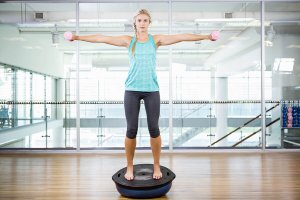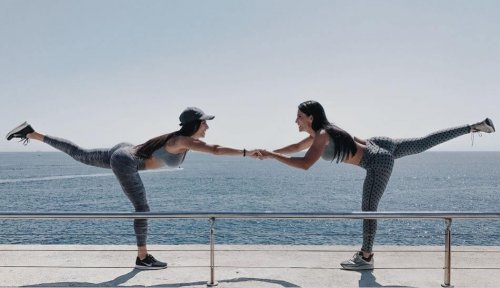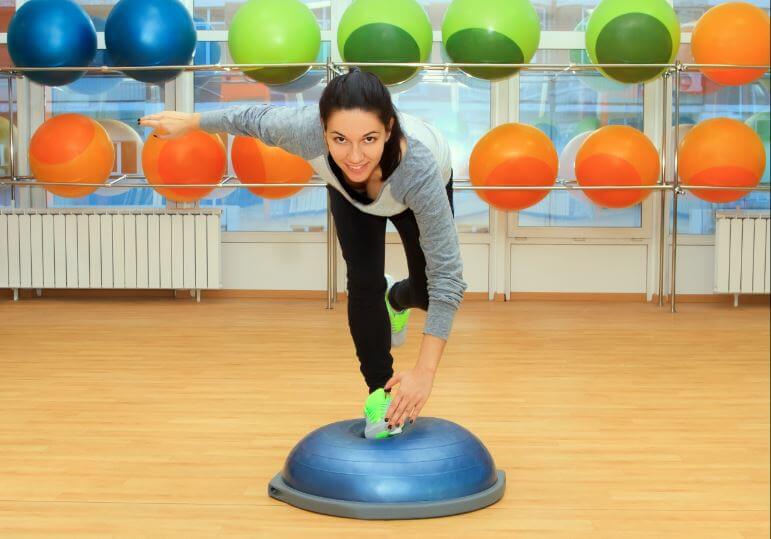What's Proprioception and Proprioceptive Dysfunction?

Proprioception is very important for both athletes and regular people. It’s a sense that helps us on a daily basis. If we suffer from proprioceptive dysfunction, the effects of this disorder will be quite noticeable.
Proprioception: what does it consist of?
The sense of proprioception is the ability to locate our own body within the space; to know the postures that our different body parts have, without having to look at them; to control the force and speed with which we contract our muscles.
It helps us maintain our balance, and react to hazards. For example, it allows us to protect ourselves if we’re going to fall, or to correct the position of our foot after stepping on a stone.
That’s why we require a good proprioceptive system for activities as simple as going for a walk, shopping, or running. Otherwise, we run the risk of falling down a step we haven’t seen, tripping over the sidewalk, or dropping our cup at the coffee shop.
In order to function properly, this sense feeds from the information provided by sight, hearing, and the sensory receptors of the muscles. Therefore, any pathology that affects these senses or muscles can lead to proprioceptive dysfunction.

Proprioceptive dysfunction
Proprioceptive dysfunction occurs when the connections between our brain and these sensory systems break. Symptoms can range from a loss of balance and recurrent tendon and ligament injuries, to not controlling the force with which we pick up objects. It can also cause us to always be in tension, even if we’re just sitting on the sofa.
Muscular pathologies
Whenever we suffer a muscle injury, it would be a good idea to work on proprioception as a way to recover this important sense and prevent a possible proprioceptive dysfunction from appearing or becoming chronic.
In the case of muscles, it’s important that they respond appropriately to the stimuli to which we subject them. To measure this, experts use a tool known as a muscle spindle. The muscle spindle detects if the muscle is lengthening, and reacts to that.
In addition, we also have the Golgi tendon organs, which are responsible for detecting any increase of tension on the tendon. And we’re not even counting the receptors we have in our joints and skin, which help the muscles to ensure that the structures move as they should.
This entire complex network of receptors constantly sends information for the brain to process. In the event of a muscle injury, one or more of them may fail.

Reeducation to prevent proprioceptive dysfunction
To re-educate our proprioception sense, it’s common to use treatments based on exercises that test our balance. For example, if you’ve suffered an ankle injury, check if you can stand on one foot without falling.
Next, try to maintain your balance while standing on both feet, but closing your eyes. Then repeat this exercise with just one foot and your eyes closed. Finally, repeat this entire process while standing on an unstable surface.
If you’re an athlete, it’s also important to re-educate the way you perform sports gestures and motions. Carry them out in a controlled environment first, starting with basic gestures and adding levels of complexity over time.
This difficulty progression will include changes of direction, the use of unstable surfaces, and surprising movements that we must help the body to become accustomed to again.
Proprioception is very important for both athletes and regular people. It’s a sense that helps us on a daily basis. If we suffer from proprioceptive dysfunction, the effects of this disorder will be quite noticeable.
Proprioception: what does it consist of?
The sense of proprioception is the ability to locate our own body within the space; to know the postures that our different body parts have, without having to look at them; to control the force and speed with which we contract our muscles.
It helps us maintain our balance, and react to hazards. For example, it allows us to protect ourselves if we’re going to fall, or to correct the position of our foot after stepping on a stone.
That’s why we require a good proprioceptive system for activities as simple as going for a walk, shopping, or running. Otherwise, we run the risk of falling down a step we haven’t seen, tripping over the sidewalk, or dropping our cup at the coffee shop.
In order to function properly, this sense feeds from the information provided by sight, hearing, and the sensory receptors of the muscles. Therefore, any pathology that affects these senses or muscles can lead to proprioceptive dysfunction.

Proprioceptive dysfunction
Proprioceptive dysfunction occurs when the connections between our brain and these sensory systems break. Symptoms can range from a loss of balance and recurrent tendon and ligament injuries, to not controlling the force with which we pick up objects. It can also cause us to always be in tension, even if we’re just sitting on the sofa.
Muscular pathologies
Whenever we suffer a muscle injury, it would be a good idea to work on proprioception as a way to recover this important sense and prevent a possible proprioceptive dysfunction from appearing or becoming chronic.
In the case of muscles, it’s important that they respond appropriately to the stimuli to which we subject them. To measure this, experts use a tool known as a muscle spindle. The muscle spindle detects if the muscle is lengthening, and reacts to that.
In addition, we also have the Golgi tendon organs, which are responsible for detecting any increase of tension on the tendon. And we’re not even counting the receptors we have in our joints and skin, which help the muscles to ensure that the structures move as they should.
This entire complex network of receptors constantly sends information for the brain to process. In the event of a muscle injury, one or more of them may fail.

Reeducation to prevent proprioceptive dysfunction
To re-educate our proprioception sense, it’s common to use treatments based on exercises that test our balance. For example, if you’ve suffered an ankle injury, check if you can stand on one foot without falling.
Next, try to maintain your balance while standing on both feet, but closing your eyes. Then repeat this exercise with just one foot and your eyes closed. Finally, repeat this entire process while standing on an unstable surface.
If you’re an athlete, it’s also important to re-educate the way you perform sports gestures and motions. Carry them out in a controlled environment first, starting with basic gestures and adding levels of complexity over time.
This difficulty progression will include changes of direction, the use of unstable surfaces, and surprising movements that we must help the body to become accustomed to again.
All cited sources were thoroughly reviewed by our team to ensure their quality, reliability, currency, and validity. The bibliography of this article was considered reliable and of academic or scientific accuracy.
- El papel de la propiocepción y el control neuromuscular en las inestabilidades del carpo. A. Lluch, G. Salvà, M. Esplugas, M. Llusá, E. Hagert, M. arcia-Elias. Rev Iberoam Cir Mano 2015; 43(01): 070-078.
- Propiocepción con pelotas en niños en etapa escolar. M. S. Noreña Osorno. Revista de Educación Física, Universidad de Antioquía. Vol. 4, Num. 4 (2015).
- Evaluación de la propiocepción: pruebas de estatestesia y cinestesia. V. Bruyneel. EMC. Volume 37, Issue 4, Pages 1-11 (2016)
This text is provided for informational purposes only and does not replace consultation with a professional. If in doubt, consult your specialist.








